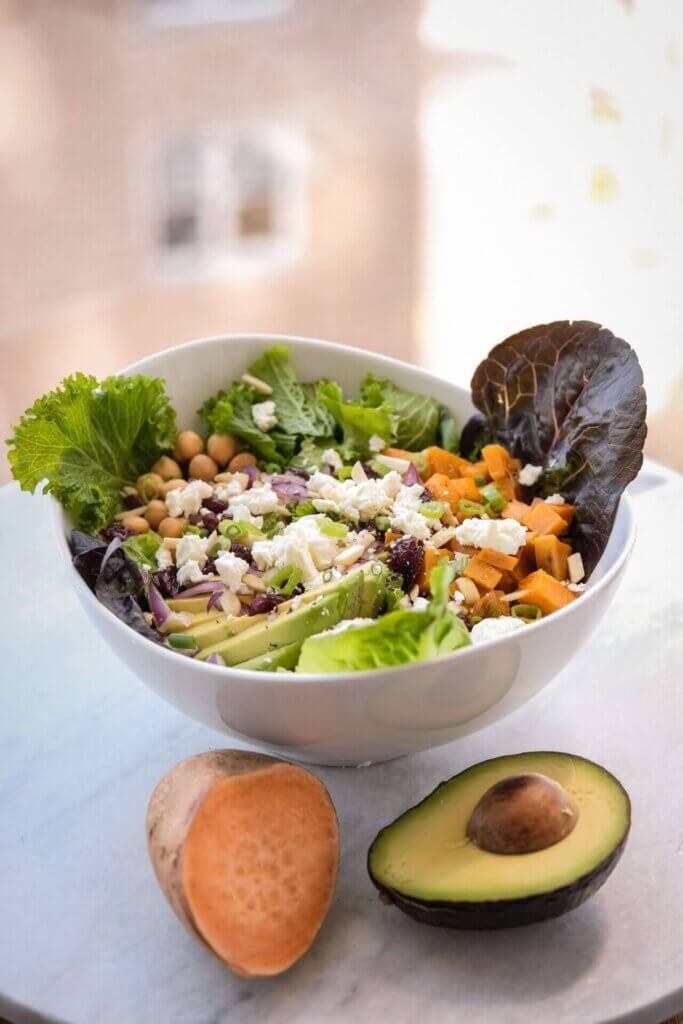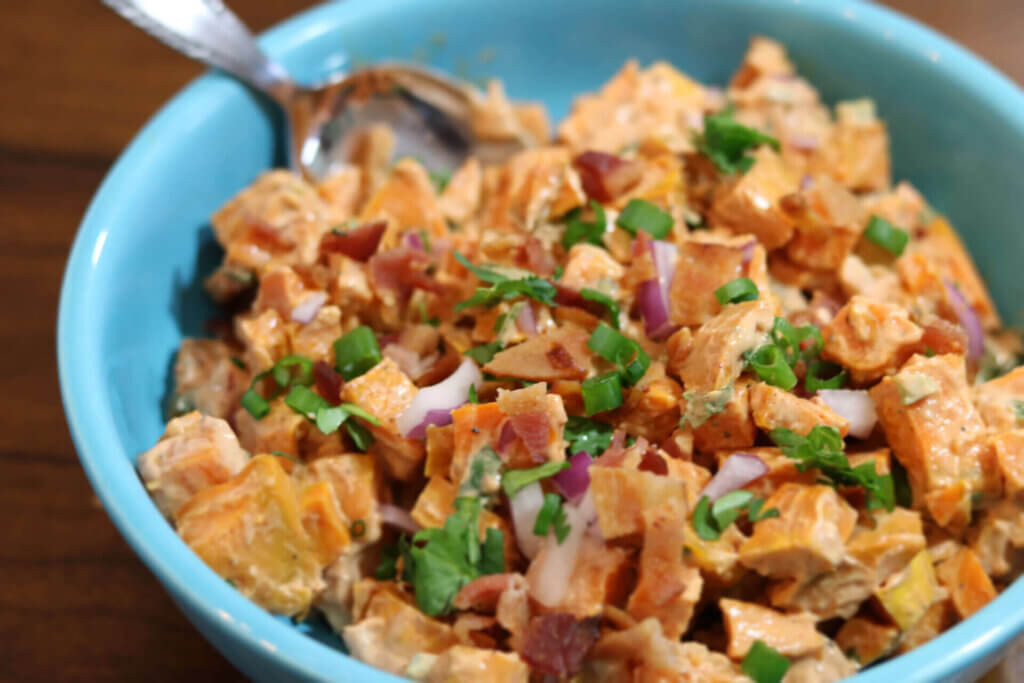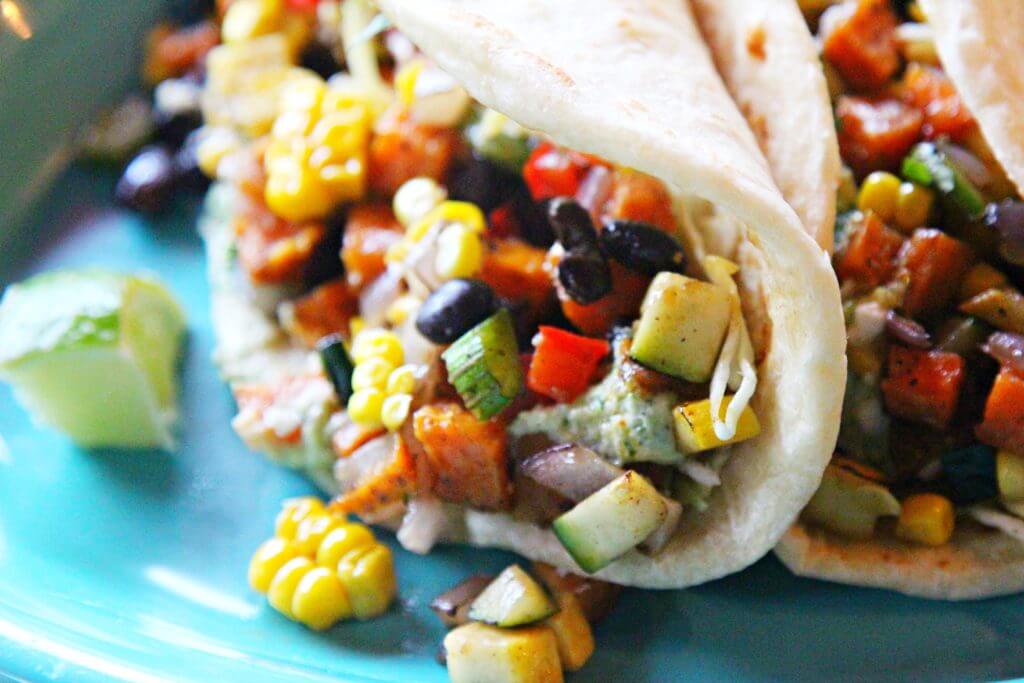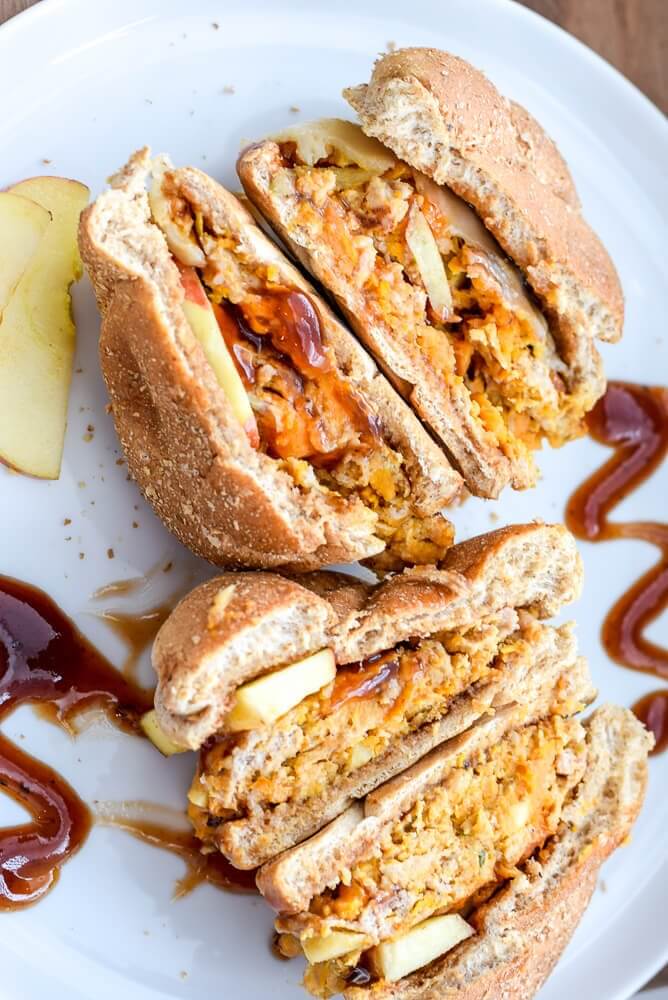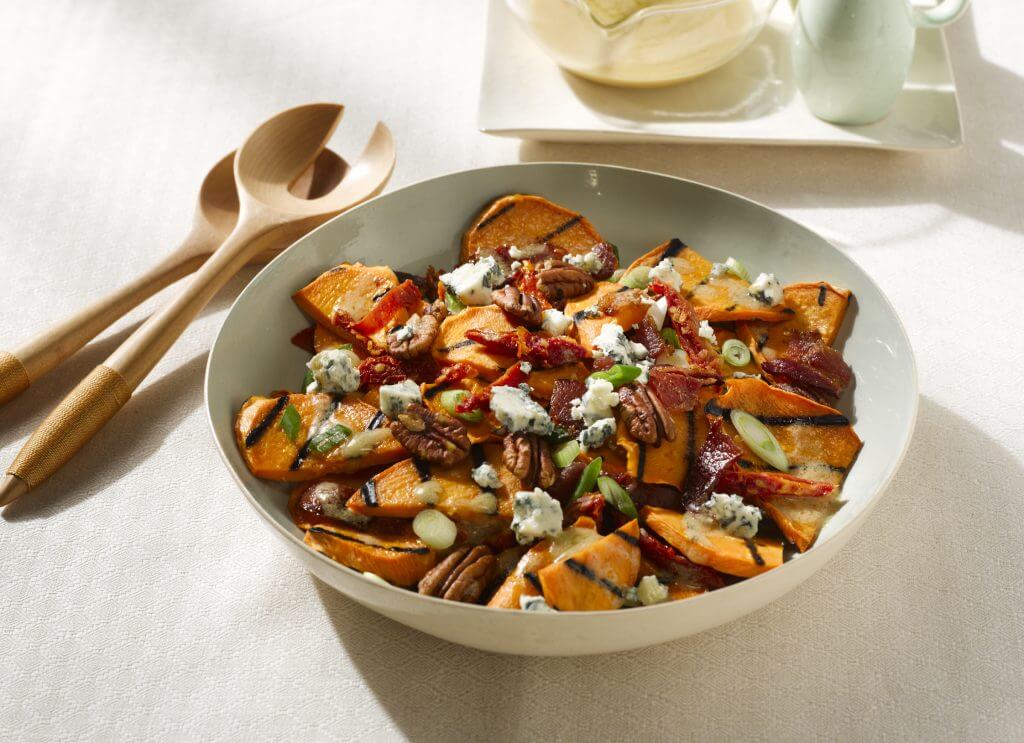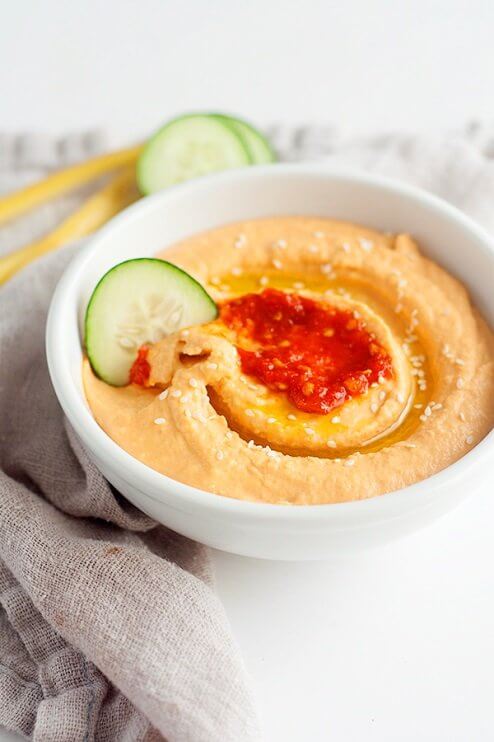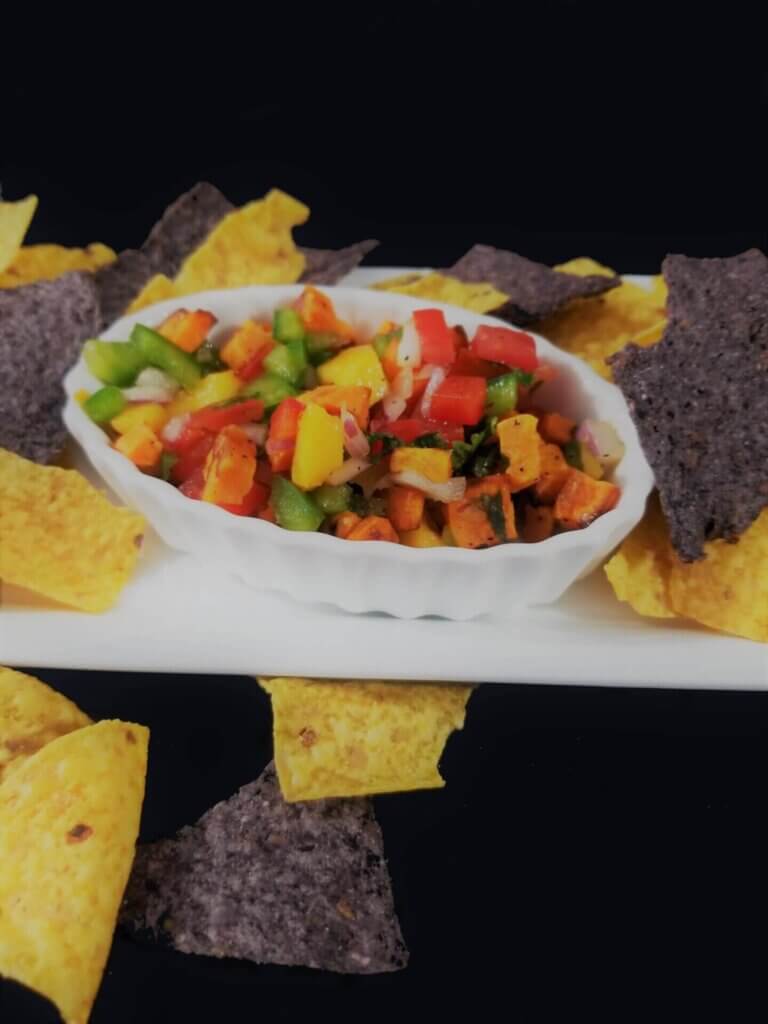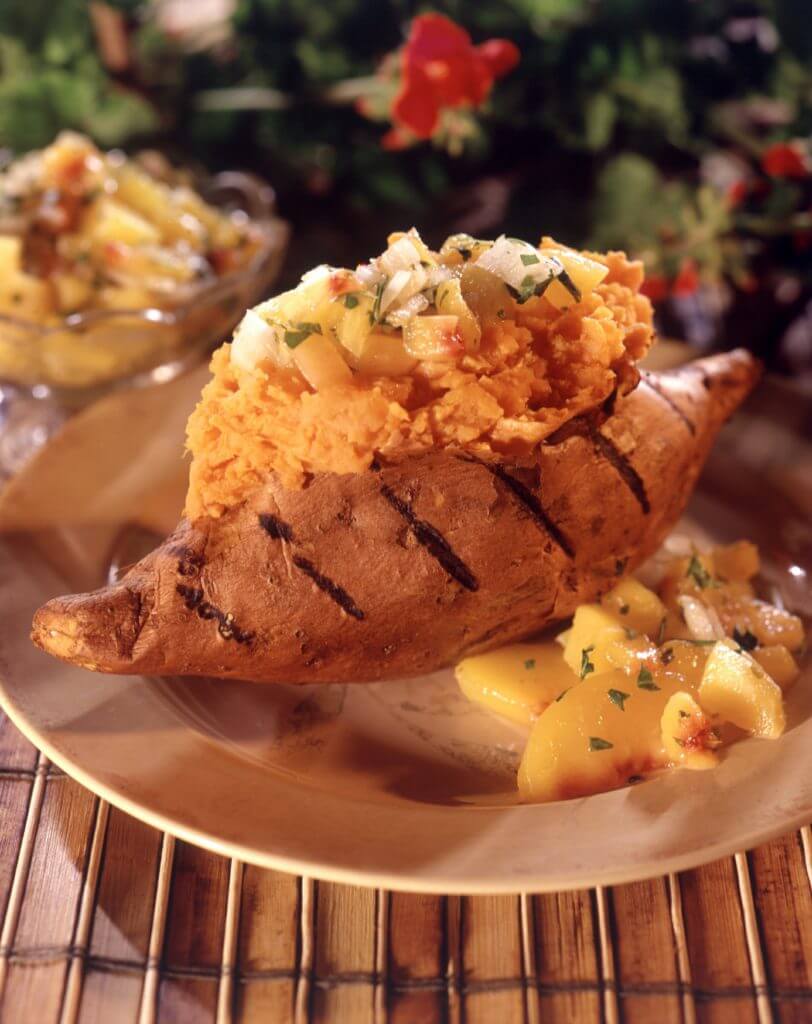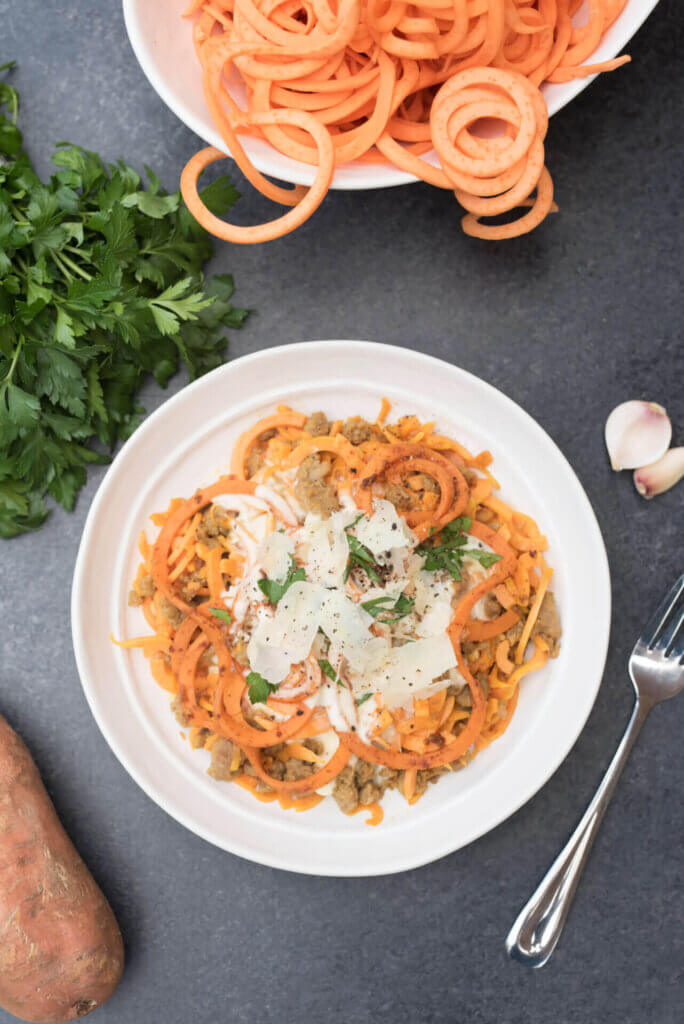FIVE EASY FOOD SAFETY TIPS AND DELICIOUS SUMMER RECIPES
by Sarah Schlichter, MPH, RDN for the North Carolina SweetPotato Commission
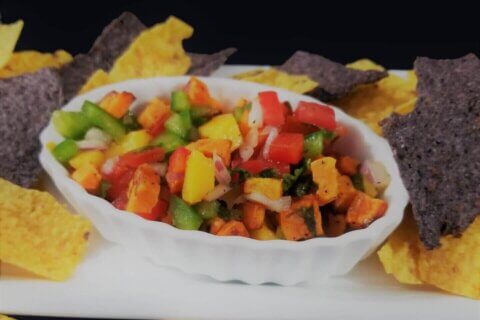
With warmer weather ahead, you may find yourself staying away from the oven inside and gravitating towards eating outside. After all, July is National Grilling Month, and there are several healthy, fun and versatile ways to utilize sweetpotatoes on the grill during these warm months!
Food safety is something to always keep in mind, especially if you are enjoying food at an outdoor gathering, picnic or get together. Or, just cooling and reheating foods in your own home. The U.S. Centers for Disease Control and Prevention estimates that roughly 48 million people (about 1 in 6 Americans) get sick each year.
Here are five easy food safety tips to keep in mind:
1. Keep the Cooking Area Clean
Always wash your hands before any food preparation, and use clean utensils for cooking and serving food. A large percentage of food poisoning cases could be eliminated if people washed their hands more often when preparing and handling food. Lastly, wash off any countertops or areas that food touches after any preparation.
2. Separate Raw and Cooked Foods
Avoid using the same surfaces, cutting boards and platters for raw and cooked foods to prevent foodborne illness. Raw meat and poultry contain harmful bacteria that can contaminate cooked foods.
3. Cook Foods Thoroughly
Food Safety.gov has recommended internal temperatures for different foods and cuts of meat. It is recommended to cook food to a safe, minimum internal temperature to destroy harmful bacteria. You can use a food thermometer to ensure the food has reached a safe temperature.
Use this guide for finding the internal temperature of common foods:
- Ground meat and meat mixtures (beef, pork, veal, lamb) – 160 degrees F
- Ground meat and meat mixtures (turkey, chicken) – 165 degrees F
- Poultry – 165 degrees F
- Pork and ham – 145 degrees F
- Fresh beef, veal, lamb – 145 degrees F
- Egg dishes (frittata, quiche) – 160 degrees F
- Leftovers and casseroles – 165 degrees F
- Seafood/Fish with fins – 145 degrees F or until flesh is opaque and separates easily with a fork
4. Keep Cold Food Cold and Hot Food Hot
For proper food safety measures, keep meat and poultry refrigerated until ready to use. If using a cooler, keep it out of direct sunlight. Pack perishables in a separate cooler than beverages.
After cooking meat and poultry, keep them hot (140 degrees) until served. You can do this by setting them on the side of the grill rack, rather than directly over the coals where they may overcook. Alternatively, keep them hot in an oven set to approximately 200 degrees in a chafing dish, slow cooker, or on a warming tray.
5. Properly Handle Leftovers and Reheating
If saving food as leftovers, refrigerate leftovers promptly in shallow containers (two inches or left) for rapid cooling and to prevent the spread of bacteria. Discard any food left out more than 2 hours (1 hour if the temperature outside is above 90 degrees F). When reheating fully cooked meats, grill to 165 degrees.
Resources:
Public Affairs. “Safe Minimum Cooking Temperatures Charts.” FoodSafety.gov, 21 Nov. 2019, www.foodsafety.gov/food-safety-charts/safe-minimum-cooking-temperature.
SUMMER RECIPES
We’ve included our top 10 summer recipes to include and complement your summer plans, whether you’re looking to grill out, add a healthy side dish to your meal, or even inspiration for a delicious entrée.
